Abstract
One can extend exclusion of ancestry beyond paternity: for example, to grandparents or other types of ancestors. Naturally, the probability of successful exclusion is smaller for more remote ancestors. The case that we have especially considered is that of exclusion on the basis of grandparents, of which there have been recent applications. A method of calculating the average probability of exclusion, P, in such situations is developed and applied to different genetic systems including DNA polymorphisms available today. As usual, multiallelic genes like HLA are by far the most informative, but a substantial number of other genes should also be tested to reach a reasonable probability of exclusion. The effect of inbreeding on P is demonstrated to be negligible.
Full text
PDF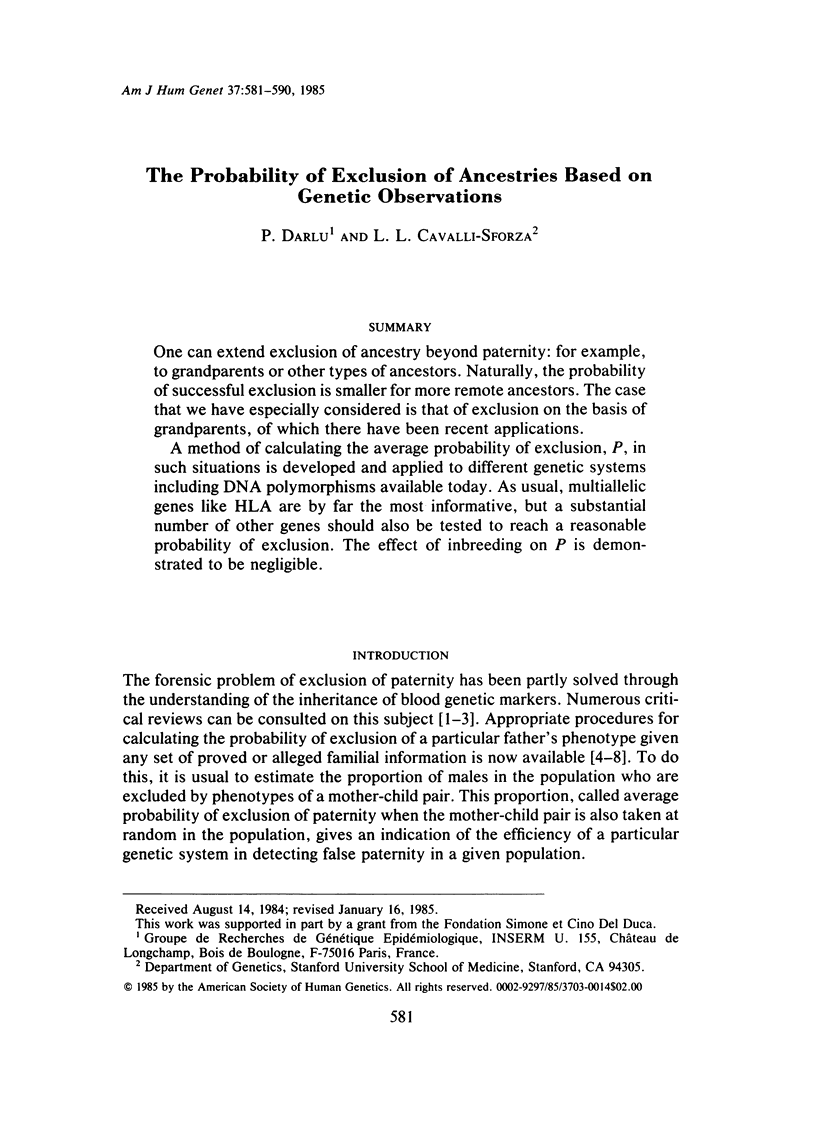
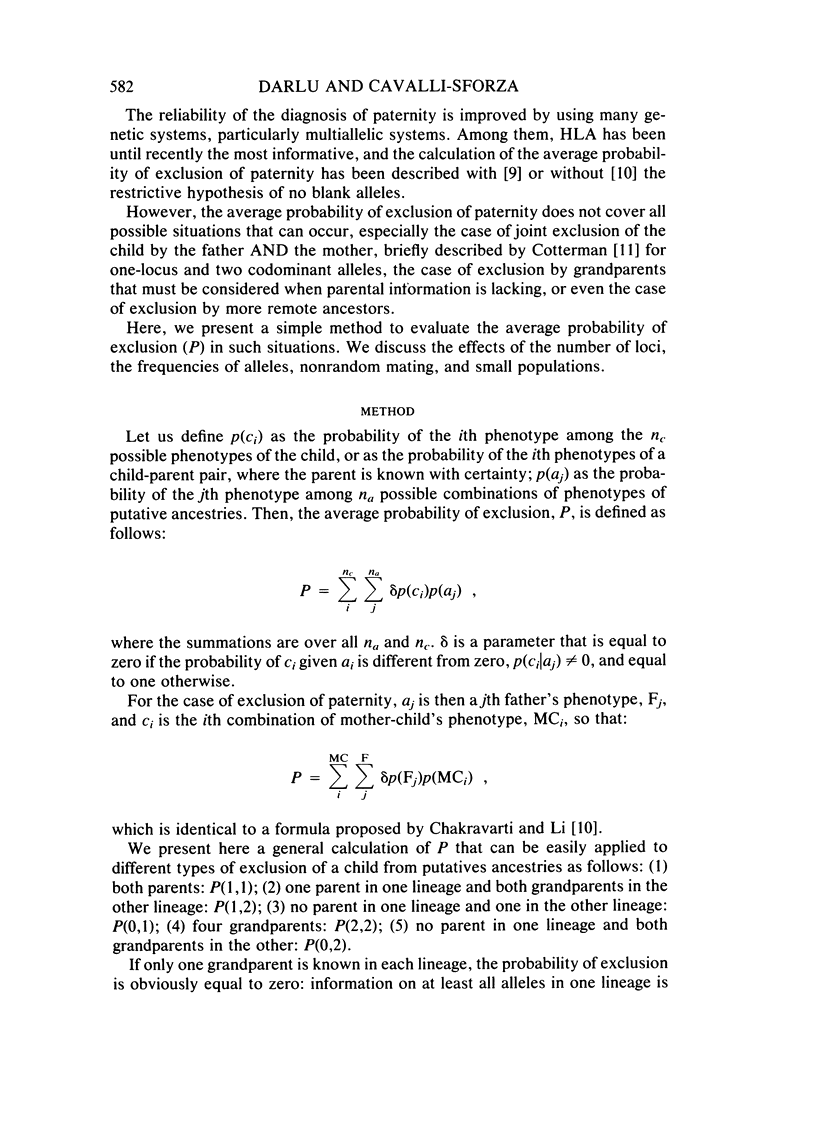
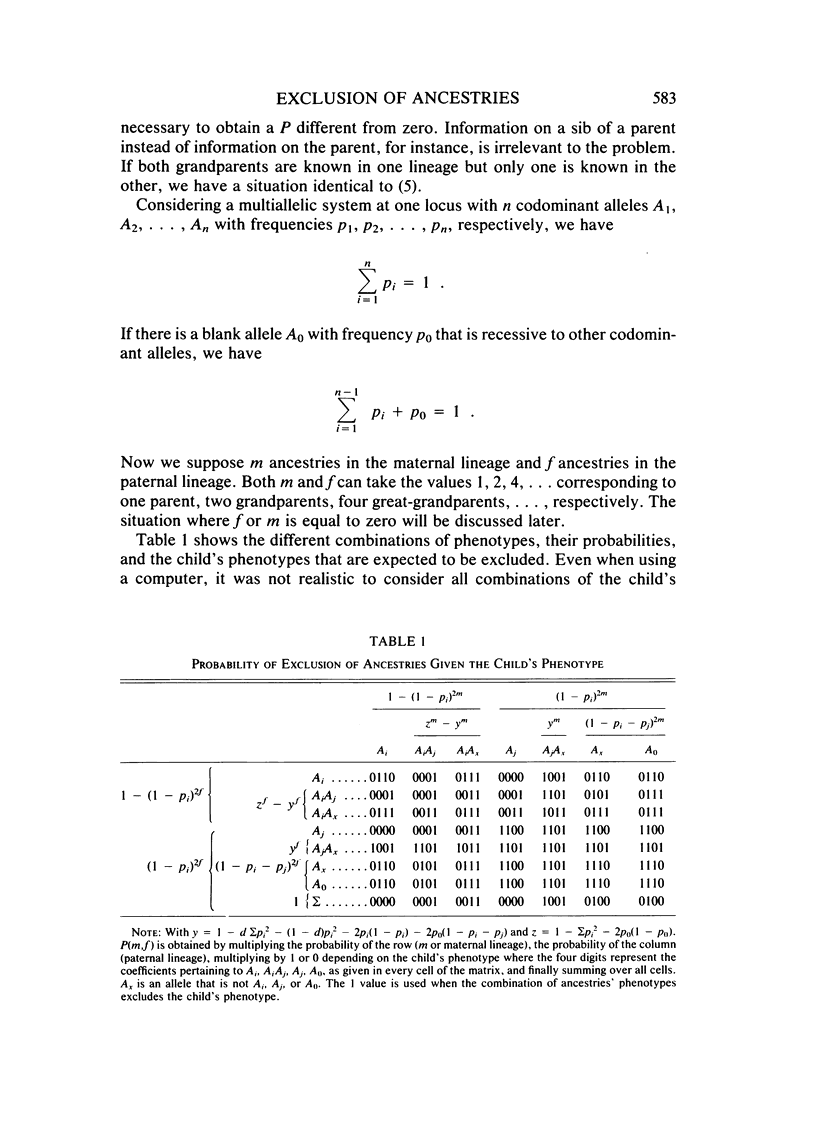
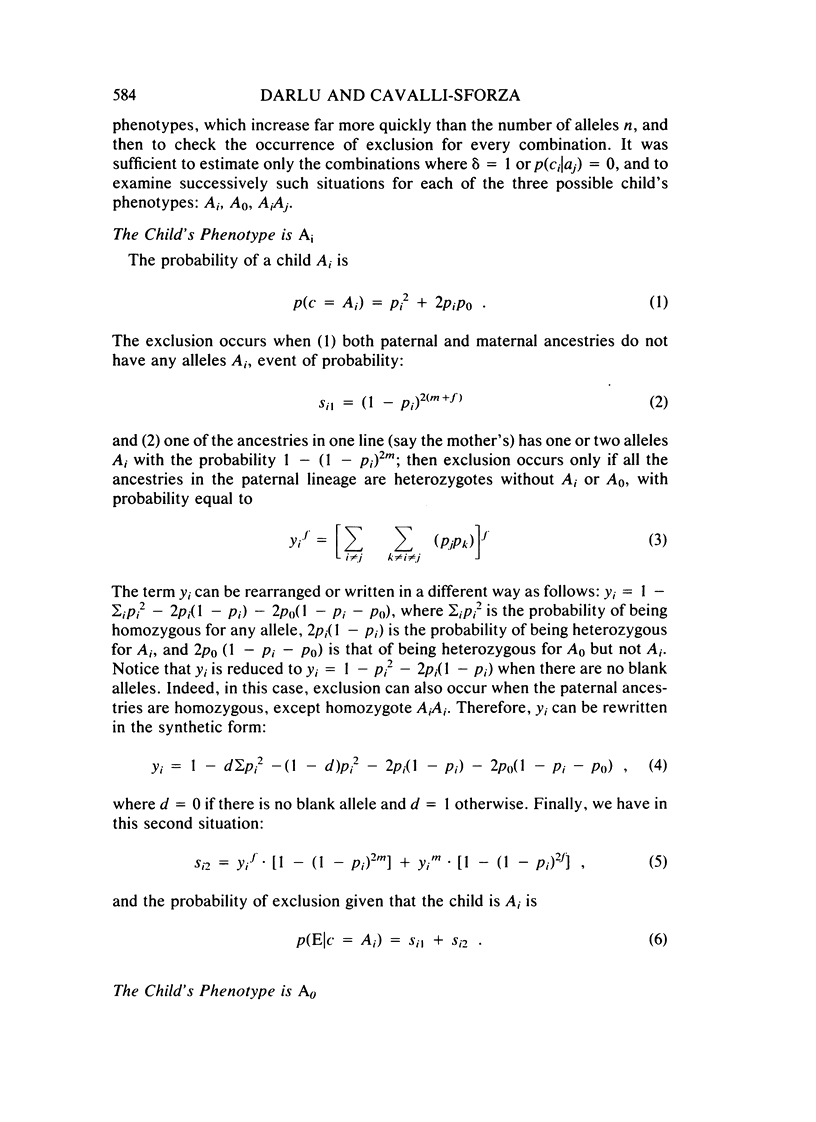
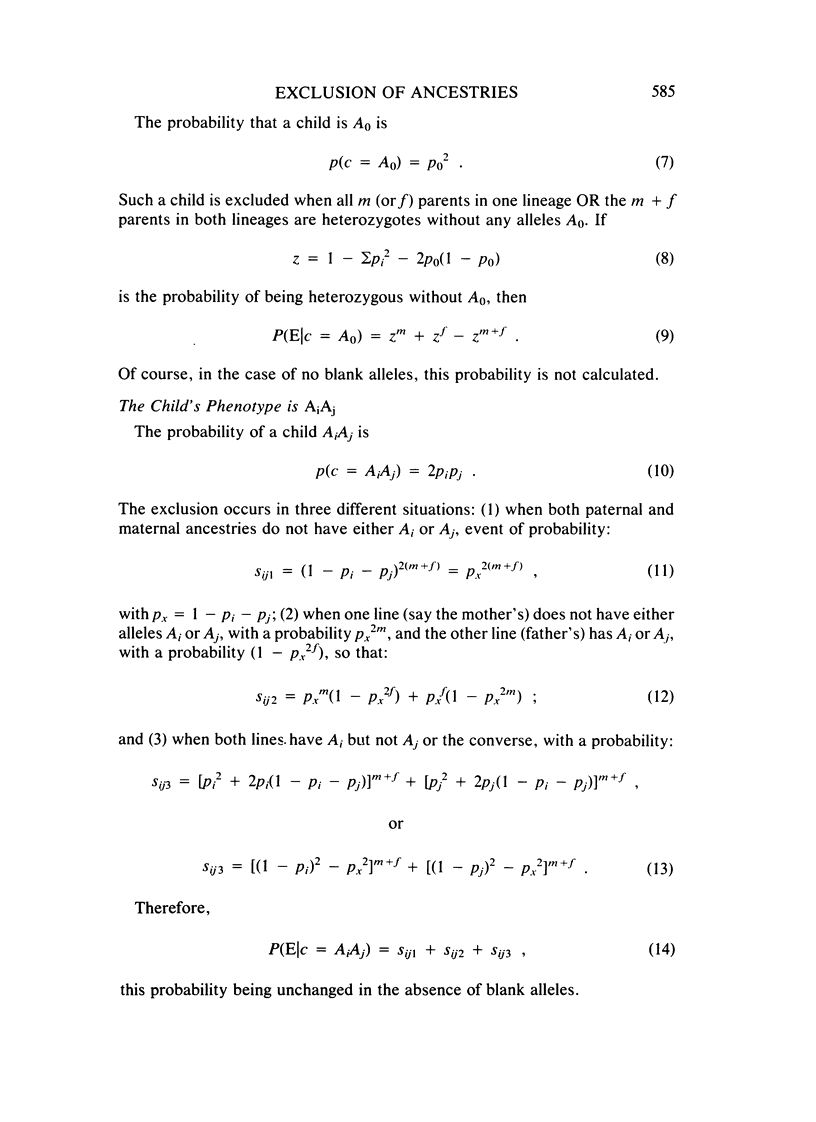
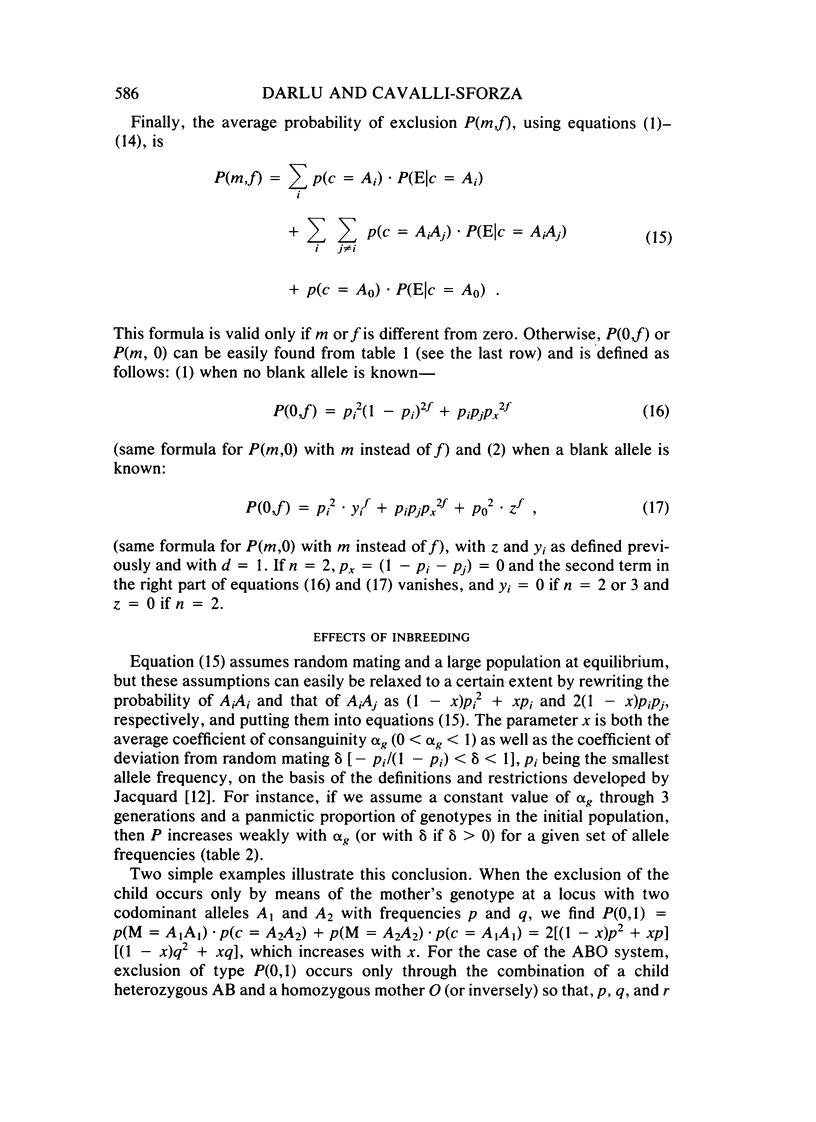
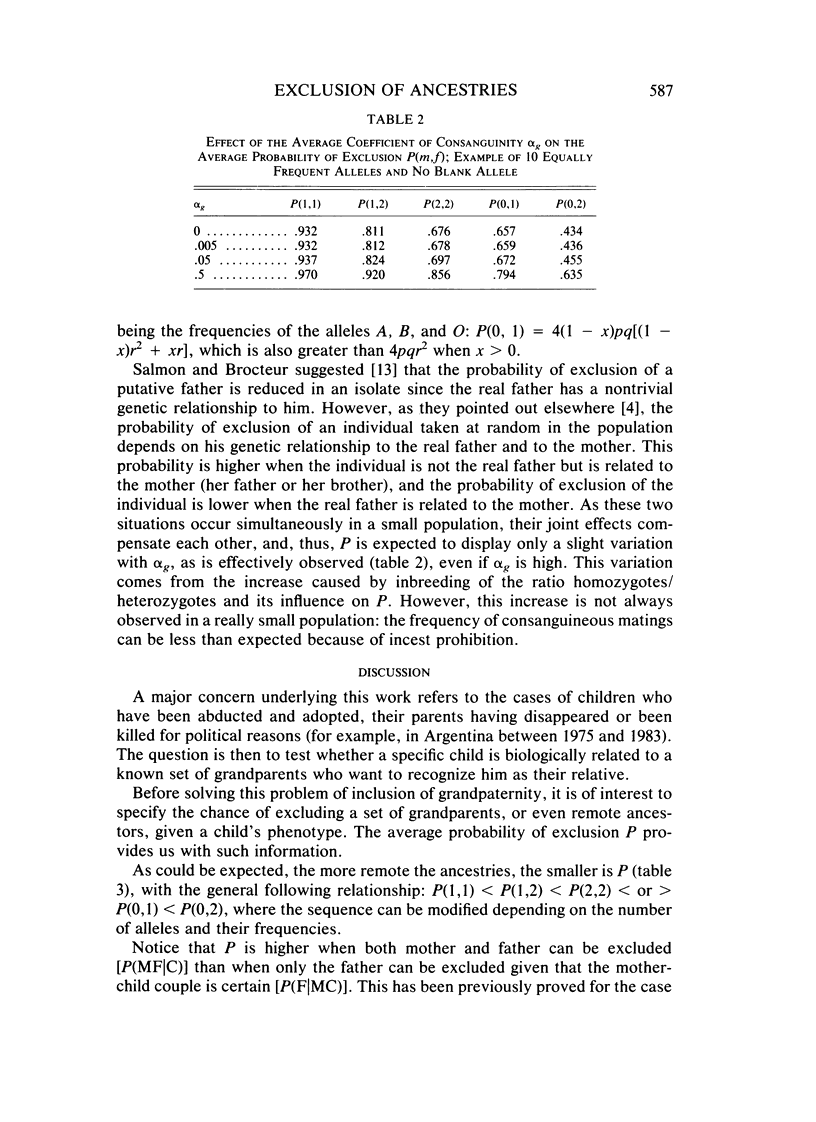

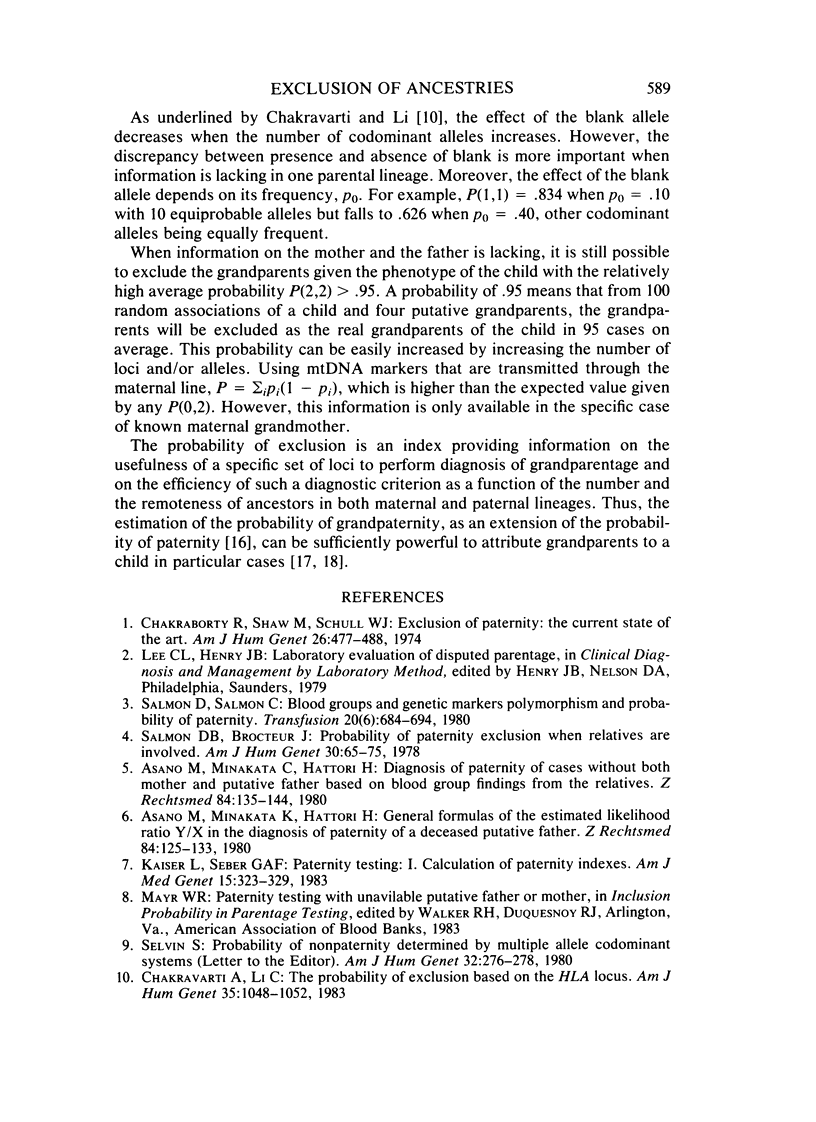

Selected References
These references are in PubMed. This may not be the complete list of references from this article.
- Asano M., Minakata K., Hattori H. Diagnosis of paternity for cases without mother and without both mother and putative father based on blood group findings from the relatives. Z Rechtsmed. 1980 Jan;84(2):135–144. doi: 10.1007/BF02114582. [DOI] [PubMed] [Google Scholar]
- Asano M., Minakata K., Hattori H. General formulas of the estimated likelihood ratio Y/X in the diagnosis of paternity of a deceased putative father. Z Rechtsmed. 1980 Jan;84(2):125–133. doi: 10.1007/BF02114581. [DOI] [PubMed] [Google Scholar]
- COTTERMAN C. W. A note on the detection of interchanged children. Am J Hum Genet. 1951 Dec;3(4):362–375. [PMC free article] [PubMed] [Google Scholar]
- Chakraborty R., Shaw M., Schull W. J. Exclusion of paternity: the current state of the art. Am J Hum Genet. 1974 Jul;26(4):477–488. [PMC free article] [PubMed] [Google Scholar]
- Chakravarti A., Li C. C. The probability of exclusion based on the HLA locus. Am J Hum Genet. 1983 Sep;35(5):1048–1052. [PMC free article] [PubMed] [Google Scholar]
- Jacquard A. Inbreeding: one word, several meanings. Theor Popul Biol. 1975 Jun;7(3):338–363. doi: 10.1016/0040-5809(75)90024-6. [DOI] [PubMed] [Google Scholar]
- Kaiser L., Seber G. A. Paternity testing: I. Calculation of paternity indexes. Am J Med Genet. 1983 Jun;15(2):323–329. doi: 10.1002/ajmg.1320150216. [DOI] [PubMed] [Google Scholar]
- Salmon D. B., Brocteur J. Probability of paternity exclusion when relatives are involved. Am J Hum Genet. 1978 Jan;30(1):65–75. [PMC free article] [PubMed] [Google Scholar]
- Salmon D., Brocteur J. Probability of paternity. Am J Hum Genet. 1976 Nov;28(6):622–625. [PMC free article] [PubMed] [Google Scholar]
- Salmon D., Salmon C. Blood groups and genetic markers polymorphism and probability of paternity. Transfusion. 1980 Nov-Dec;20(6):684–694. doi: 10.1046/j.1537-2995.1980.20681057158.x. [DOI] [PubMed] [Google Scholar]
- Selvin S. Probability of nonpaternity determined by multiple allele codominant systems. Am J Hum Genet. 1980 Mar;32(2):276–278. [PMC free article] [PubMed] [Google Scholar]


